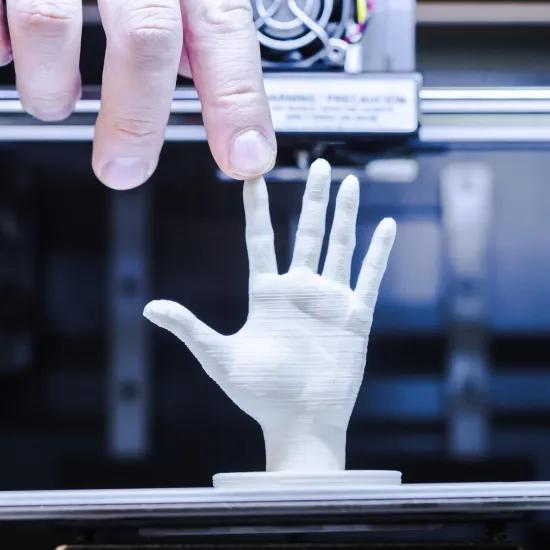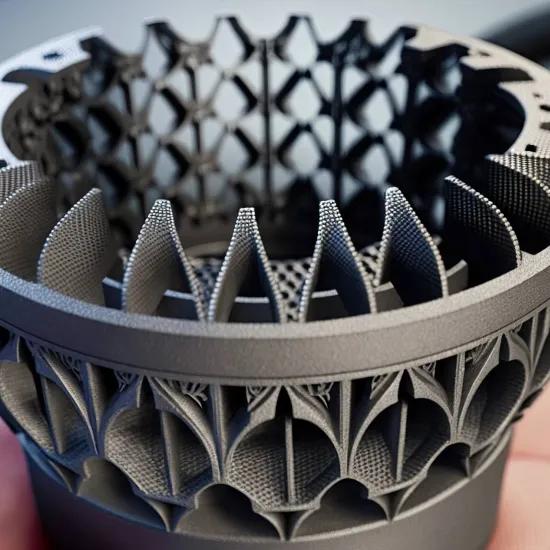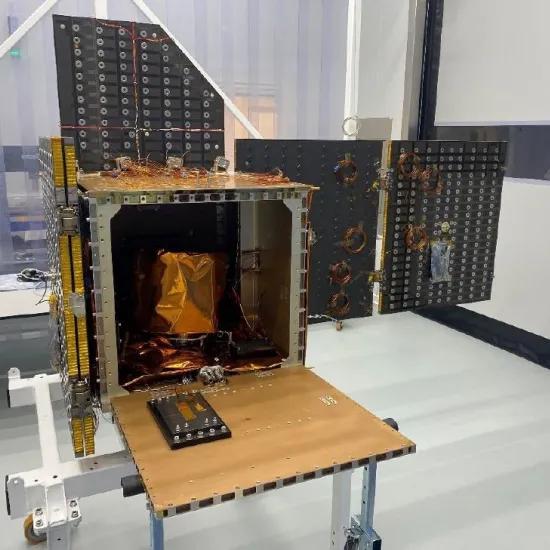Sirris looked into the feasibility of removing support structures from metal additive manufactured (MAM) parts using cobots. This feasibility study conducted by Sirris is part of a larger work package in the ALMA project in which different approaches to remove the inevitable support structures on Metal Additive Manufactured parts were investigated.
The goal of the ALMA project was to research the possibilities and challenges of using metal additive manufacturing (MAM) for safety critical class-2 components for aerospace applications. The project is an ICON‑type project conducted by a consortium of companies with ASCO in the lead. ASCO Industries, headquartered in Zaventem, is a renowned supplier of design and manufacture of complex mechanical assemblies for the aerospace industry.
The feasibility study on the removal of support structures by cobots was started based on previous experience gained at Sirris in a study on polishing to high gloss of mould parts. Software blocks to work with force-controlled movements were reused, and also the approach was applied to not try to automate the entire process, but to divide tasks between robot and human. Part of the relatively simple work might be taken out of the hands of the operator and thus the operator and cobot can be used on their respective strengths. The operator works on the hard-to-reach places where ingenuity and sensitivity are required.
Improving current way of working
The current manual way of working for removing support structures from MAM parts sometimes seems archaic. An operator uses tools such as cutters, hammer and chisel, which are processes difficult to automate. Some tool suppliers have already developed a guide with methods and tools specifically for removing support structures on MAM products. The use of a powered hand-spindle is recommended in combination with adapted tools (T-cutters, conical milling cutters, grinding pins, ...). These guides were used as a basis for selecting the tools and for determining a cobot set-up for carrying out the feasibility tests.
The ease of use of a potential cobot solution is a second important criterion. This should preferably be such that a non-cobot expert can operate the solution for a multitude of tasks. A test piece with support structures with different levels of complexity was used to determine whether an approach can be found to provide an ultimate usable answer to all the requirements.
Teach‑by‑demonstration
The teach‑by‑demonstration principle that usually makes cobots easy to program was also used as a basis for this task.
First, the operator shows the cobot on the basis of a number of discrete points where support structures need to be cut, and the software calculates intermediate robot frames and force frames based on these points. Then parameters are set for force, pressure direction, speed, cobot‑compliancy, ... After a few improvement steps, an approach was found with a T-cutter tool that moves back and forth over the surface at an angle to the plane to be‑machined while with a constant pressure the support structures are ground over.
The support structures do not always come loose, despite the fact that the connection to the workpiece has been cut. This is due to the design of the support structures. The support structures are designed as long-strung formations over the entire contour of the workpiece. In addition, there are also cross-connections over the workpiece. The transverse connections ensure that the support structures remain suspended. Adapting the design of the support structures with 'ease of removal' in mind might solve this problem. Support structures with fewer cross-connections would also facilitate the work for the human operator. The support structures are mainly used to support overlying layers during the printing process and to allow for heat‑dissipation. Connecting support structures in smaller islands instead of in long continuous contours would have little or no influence on support and heat dissipation, but would allow them to detach from the workpiece once they have been cut loose. This seems therefore a first step towards automating the removal of support structures.
Conclusion
Hard-to-reach support structures on complex surfaces are usually more common in MAM workpieces than support structures in simple, easily accessible surfaces. Teach‑by‑demonstration for hard-to-reach or complex surfaces can unfortunately not offer a solution, because the complex surfaces cannot be learned manually. Deeper (recessed) surfaces even become visible only after removing the upper support structures. Thanks to his ingenuity the human operator also succeeds in solving these challenges by constantly adjusting strategy (movements, tools, ...) as he progresses.
The second conclusion is therefore that teach‑by‑demonstration can hardly offer a solution for the complex surfaces. Off-line programming based on the CAD model seems to be the most plausible alternative for this. CAM software specifically for removing support structures and a tool library with tools suitable for the task are indispensable here.
Want to know more? Contact our experts!
ALMA is an ICON project, funded by VLAIO via SIM in STREAM research framework.






